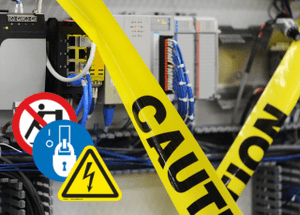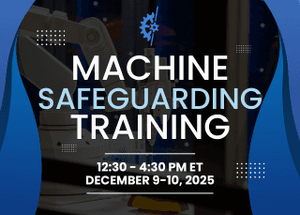How PPE Strengthens Construction Safety

Of the 25 most dangerous jobs in America, various jobs in the construction make up a majority of the list, with one in five deaths in the workplace being in the construction industry according to OSHA. A construction site is not only a deadly environment, but an inherently risky place, with a 71 percent higher rate of injury than other industries. These alarming numbers highlight the fact that construction safety should be of high concern and carefully monitored to prevent these statistics from worsening.
We understand the challenges of keeping a worksite safe, and that it’s not always an easy task, but paying attention to regulations and compliance issues does a couple of things for your company: it keeps workers safer and it protects your company from liability issues. By meeting or exceeding the regulations for your worksite you put your company in its best possible position.
The Importance of Personal Protective Equipment
Protecting employees from construction hazards necessitates a multi-tiered approach, requiring physical environment changes through engineering, and work practice control through teaching workers the safest way to carry out a task. Although, the last line of defense for workers of any industry, but especially those in construction, is personal protective equipment (PPE), which is there when hazardous risks cannot be avoided.
In the United States, the primary agency responsible for PPE and worker safety in construction is the Occupational Safety and Health Administration (OSHA). Its various areas that PPE is intended to protect include: 
Compliance with OSHA regulations for workplace and construction safety is at best a complicated task even for a company doing its utmost to meet all requirements. Some of the regulations involve difficult to interpret language. Many change each year as well as does the volume of data and information to keep up with. In terms of protective equipment, PPE is required for the eyes, face, head, and extremities through protective clothing, respiratory devices, and protective shields. Many companies may find it helpful to partner with a company that is experienced with the regulatory environment and proper safety methodology for items like risk assessments and safeguarding.
The Last Line of Defense
While providing the proper PPE to your workers is certainly important, ensuring that they actually wear it in hazardous areas and situations is even more so; here, safety signs and labels can be an important reminder of correct safety protocol to adhere to at the point of interaction with the potential hazard. The following details PPE needs as they relate to situations, along with our best practice sign options to warn about hazards and enforce the protective gear:
- Fall Protection: Lanyards, lifelines, and safety belts are required for employee safeguarding, as detailed in 29 CFR 1926.107. Lanyards are good for supporting one person, which is attached to an object or safety line. A lifeline is a rope for one person where a safety belt or lanyard is attached and must support a minimum dead weight of at least 5400lbs. A safety belt is worn around the waist as its name suggests, and is attached to either a lifeline or lanyard
- Foot Protection: As outlined in 1926.96, footwear needs to comply with the American National Standard Institute’s (ANSI) Z41-1967 standard. “Each affected employee shall wear protective footwear when working in areas where there is a danger of foot injuries due to falling or rolling objects , or object piercing the sole, and where such employee’s feet are exposed to electrical hazards.”
- Hand Protection: Rubber insulating gloves are a must for any construction worker who com
es into contact with electrical equipment, protecting them from high voltage. See the 1926.97 for more specific standards. Liner gloves are best for warmth in the cold and allow for heat to escape in hot months, and leather gloves allow for double protection from sharp objects. - Head Protection: Headwear is needed whenever there is a possible risk of head injury due to falling or flying objects, impact, electrical shocks or burns per 1910.135. Many helmets can be categorized by the amount of electrical protection they provide, which is a persistent and major hazard within construction.
- Hearing Protection: If an employee is exposed to 90 decibels or over for an extended perio
d of time, fitted hearing protection that has a high rated Noise Reduction Rating (NRR) of 50 percent is suggested. For a full noise exposure chart, see OSHA’s 1926.52. - Eye Protection: This area of protection is covered in 1926.102 and requires employers to provide employees with eye or face protection that protects against flying particles, molten metal, liquid chemicals, acids or caustic liquids, chemical gases or vapors, or light radiation . These are also required to have side protection, and eye prescription appropriate adjustments.
- Respiration Protection: As according to 1910.134, a respirator should be provided to employees who may be exposed to potential airborne illness , excessive dust, fogs, fumes, mists, gases, smokes, sprays, or vapors when effective engineering preventive measures are no longer possible.
Visibility is the Best Protection
Overall, proper signage on a construction worksite plays an important role in PPE compliance. In certain situations, OSHA requires that workers be notified in clear language and symbols that danger is present. Failure to post or correctly position required signage can result in your company receiving citations and fines. If there is an injury or death as a result of inadequate signage, your company can be fined or be named in a lawsuit.
At Clarion Safety, our products help you meet compliance standards. Not only do we offer OSHA compliance signage , but our safety sign and label products can help you meet ANSI and ISO best practices as well as specific regulatory requirements such as WEEE, RoHs, REACH, UL, GHS, Prop 65 and more.
If you’re looking for custom PPE warning or instructional signs that are specific to your workplace, reach out to our team today!



